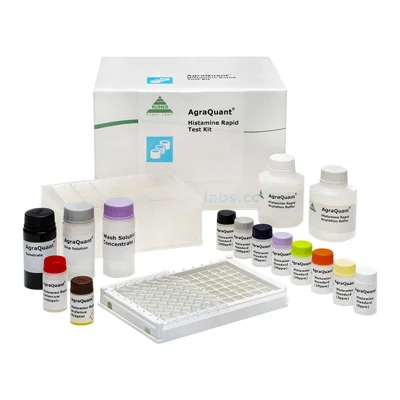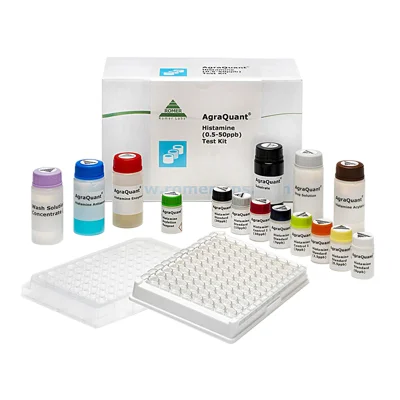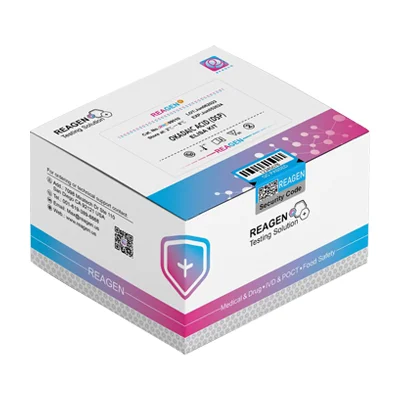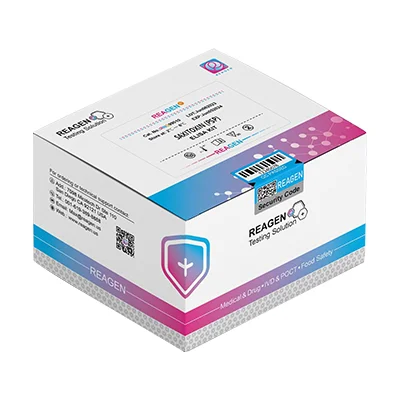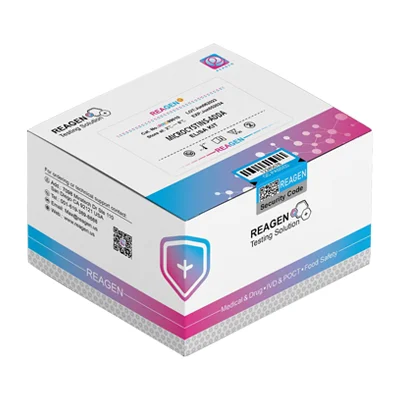
Seafood Residue Testing

Seafood Residue Testing
Seafood histamine, sulfites, and marine biotoxins are three of the most common adulterants that pose significant safety concerns for marine products.
Around 40% of the seafood-related foodborne illnesses reported to the U.S. Centers for Disease Control and Prevention (CDC) are caused by histamine fish poisoning. This type of poisoning occurs when individuals consume fish that has not been refrigerated or preserved properly, leading the bacteria to generate toxins within the fish tissue with a significant amount of histidine. The symptoms of histamine poisoning resemble an allergic reaction, such as mild skin irritation, nausea, vomiting, and diarrhea.
Antioxidants such as sulfites are used as preservatives in various foods and beverages, including certain seafood products like shrimp, lobster, and related crustaceans to prevent melanosis (a.k.a "blackspot"). While sulfating agents are very beneficial to the seafood industry, some consumers are highly allergic to sulfite residues in food. For this reason, the US FDA regulations state that seafood containing sulfite residues of 10 ppm or more must be labeled as containing sulfites.
Marine biotoxins are produced by harmful algal blooms (HAB), that are unpredictable and can occur worldwide. In addition to seafood and shellfish contamination, they also pose a threat to both humans and wildlife populations. Due to the high demand for shellfish across the world, it is vital to test if shellfish are free from contamination as the toxins cannot be eliminated through cooking.
Certain types of microscopic algae, specifically phytoplankton, are naturally present in marine waters in safe numbers but can undergo periodic surges to harmful levels during algal blooms. Here are the most common diseases associated with marine biotoxins according to the Food and Agriculture Organization (FAO):
- PARALYTIC SHELLFISH POISONING (PSP)
- DIARRHETIC SHELLFISH POISONING (DSP)
- AMNESIC SHELLFISH POISONING (ASP)
Paralytic shellfish poisoning (PSP) in humans is caused by ingestion of shellfish containing saxitoxins. These toxins are accumulated in shellfish feeding on toxin-producing algae more commonly known in the country as “red tide”. Symptoms of human PSP intoxication vary from a slight tingling or numbness to complete respiratory paralysis. In fatal cases, respiratory paralysis occurs within 2 - 12 hours of consumption of the PSP-contaminated food.
In humans, DSP is caused by the ingestion of contaminated bivalves such as mussels, scallops, oysters or clams. The fat-soluble okadaic acid and its derivatives accumulate in the fatty tissue of the bivalves. DSP symptoms include diarrhea, nausea, vomiting, and abdominal pain starting 30 minutes to a few hours after ingestion with complete recovery within 3 days.
Also known as domoic acid poisoning (DAP), ASP was first recognized in 1987 in Prince Edward Island, Canada. At this time, ASP caused three deaths and 105 cases of acute human poisoning following the consumption of blue mussels. The symptoms included abdominal cramps, vomiting, disorientation, and memory loss (amnesia).
AgraQuant® Histamine Rapid
A rapid direct competitive ELISA test system for the quantification of histamine
AgraQuant® Histamine Rapid follows a Direct Competitive ELISA principle for the quantitative detection of histamine in fresh and canned fish, fish meal, and fish in oil.
- Can accurately measure histamine concentrations ranging from 3 - 300 ppm
- Can detect histamine levels for as low as 1 ppm
- Consists of 48 wells (maximum of 33 tests/kit)
- Results can be obtained in 35 minutes
AgraQuant® Histamine
An indirect competitive ELISA assay for the quantitative analysis of histamine for higher sensitivity
AgraQuant® Histamine uses an acylation process combined with the indirect competitive ELISA principle for the quantification of histamine in fresh fish, milk, cheese, sausage, and wine. This process involves using an acylation reagent to convert histamine into N-acyl-histamine, which can be measured using the ELISA method.
- Designed to quantify histamine levels within a range of 0.5 - 50 ppb
- Can detect histamine levels for as low as 0.15 ppb
- Consists of 96 wells (maximum of 66 tests/kit)
- Results obtained in less than 1 hour and 30 minutes
REAGEN™ Domoic Acid (ASP) ELISA Test Kit
Detection of Amnestic Shellfish Poisoning in shellfish and water samples
REAGEN™ Domoic Acid (Amnestic Shellfish Poisoning) is based on a competitive colorimetric ELISA assay for the quantitative analysis of domoic acid in mussels, algae, and water samples
- Can detect domoic acid as low as 0.125 ppb
- Limit of detection is 30 ppb in mussels, and 6 ppb for water samples
- Results can be obtained within 90 minutes regardless of the number of samples
REAGEN™ Okadaic Acid (DSP) ELISA Test Kit
Detection of Diarrheal Shellfish Poisoning in shellfish and water samples
REAGEN™ Okadaic Acid (Diarrheal Shellfish Poisoning) is based on a competitive colorimetric ELISA assay for the quantitative analysis of okadaic acid in mussels, algae, and water samples
- Can detect okadaic acid as low as 0.3 ppb
- Limit of detection is 30 ppb in mussels, and 6 ppb for water samples
- Cost-effective and streamlined extraction method
REAGEN™ Saxitoxin (PSP) ELISA Test Kit
Detection of Paralytic Shellfish Poisoning in shellfish and water samples
REAGEN™ Saxitoxin (Paralytic Shellfish Poisoning) is based on a competitive colorimetric ELISA assay for the quantitative analysis of saxitoxin in mussels, algae, and water samples
- Can detect saxitoxin as low as 0.05 ppb
- Limit of detection is 3 ppb for mussels, and 1 ppb for water samples
REAGEN™ Microcystins-ADDA ELISA Test Kit
Sensitive congener-independent detection of Microcystins and Nodularins
An indirect competitive ELISA for the detection of Microcystins, Nodularins, and their congeners by specific antibodies
- Limit of detection based on MC-LR is 0.10 ppb
- The intensity of blue color is inversely proportional to the concentration of Microcystins present in the sample
- Has the capacity for 96 determinations or 42 testing samples in duplicate
- Shelf-life: 12 months
At Glenwood Technologies, we are committed to provide advance solutions and high quality products to meet your needs in detecting seafood residues. We offer a diverse range of cutting-edge technology for food manufacturing and related industries, enabling the precise monitoring of histamine levels and detection of specific toxins in processed food, shellfish, and seafood. With our innovative technologies and reliable products, you can ensure accurate, efficient, and cost-effective analysis of marine biotoxins. Be our partner today to elevate your seafood residue testing experience and prevent unsafe marine products.


